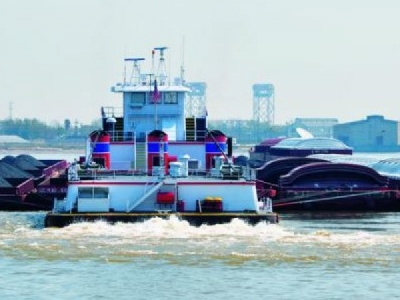
Posted on June 19, 2018
By Pamela Glass, WorkBoat
Funding for inland waterways is having a good moment in Washington, D.C., as lawmakers are nearing approval of strong budgets for navigation infrastructure, while rejecting user fees and tolls that were proposed by the Trump administration.
In three important developments over the past week, Congress and the Army Corps of Engineers have taken action to commit in some cases record federal investments for inland waterways, ports and other water infrastructure projects.
Here is the breakdown:
– The Corps released its fiscal year 2018 Work Plan on June 11 that distributes the additional funding provided in the 2018 Omnibus funding bill and identifies new starts and feasibility studies for navigation construction projects. Priorities include funding for the ports of Jacksonville, Fla.; Savannah, Ga.; Corpus Christi, Texas; and Wilmington, N.C.; the Olmsted Lock and Dam along the Ohio River in Illinois and Kentucky; Kentucky Lock along the Tennessee and Ohio rivers in Kentucky; the Lower Mon Locks and Dams 2, 3, 4 along the Monongahela River in Pennsylvania; the Chicamauga Lock in Tennessee; the LaGrange Lock and Dam in Illinois; and several projects along the Gulf Intracoastal Waterway. Approximately $57.6 million will go toward a major rehabilitation and modernization of Soo Locks, Mich., the lone new start in the plan.
“The FY18 Omnibus appropriations bill and theCorps’ FY18 Work Plan represent another year of record funding for the Corps’ critical civil works mission,” said Mike Toohey, president and CEO of the Waterways Council Inc., which advocates for inland waterways funding. “When there was once just one navigation project funded in past fiscal year budgets (Olmsted), today there are four projects proceeding and one new start.”
– The House passed the fiscal year 2019 Energy and Water Development Appropriation on June 8 that would provide a healthy increase to the Corps of Engineers budget. The bill is now pending Senate action. The $7.28 billion budget is $451 million more than the fiscal year 2018 appropriated amount. The bill stipulates that revenues in the Inland Waterways Trust Fund will be fully used to finance inland navigation construction projects, and that the construction and operation and maintenance accounts receive healthy increases. Importantly, the bill did not include a 10-year, $1 billion-per-vessel user fee to be paid by commercial operators on the inland system. This was proposed as part of President Trump’s fiscal 2019 budget request and faced strong opposition from the inland barge industry.
“For the first consecutive fiscal year, the House has provided extremely strong and in some cases record-level funding for the Corps’ civil works mission, well above what the administration has proposed,” WCI’s Toohey said in a statement. “Full-use of IWTF revenues will allow the the continuation of the top priority navigation projects with exact amounts to be determined by the Corps’ FY19 work plan.
– The House passed its version of the Water Resources Development Act of 2018 (WRDA) on June 6 that authorizes federal work on locks and dams, dredging and other projects, and sets federal water policy. The vote was 408-2. While narrow in focus compared to other WRDA bills, it would build on previous reforms to boost the role of non-federal actors like states and local communities in water projects, expedite projects by scrapping redundant environmental studies and deauthorizing some projects.
The bill does not contain a user fee or public-private partnership toll proposal, which barge operators had called “unfair and inequitable.” These proposals were included in the president’s 2019 budget and in the administration’s infrastructure plan, and had the potential to be included in the House WRDA bill, according to WCI.
As an authorization bill, WRDA would authorize an array of projects across the country, including nearly $1 billion for an extensive project to curb coastal erosion in Galveston, Texas, deepen and expand the harbor in Savannah, and protect against the spread of invasive species.
The bill does not, however, include a provision sought by U.S. ports that would require funds collected in the Harbor Maintenance Trust Fund be used only for harbor maintenance, not for unrelated government spending.
The Senate is working on its version of WRDA and the White House has said the president will sign the final bill. Once completed, this will be the third time that a WRDA bill has passed on a two-year schedule. Before 2014, due to partisan differences, Congress had not passed a WRDA in seven years, which stalled infrastructure projects and increased project costs.
“WRDA works because these are investments in the type of infrastructure that is vital to every American and every part of the country,” said Rep. Bill Shuster, R-Pa., chairman of the House Transportation and Infrastructure Committee. “The health of this infrastructure directly impacts how efficiently the things we buy get onto store shelves, how quickly the goods we produce get to markets around the world, and how competitive our businesses and farmers are.”
Source: WorkBoat





